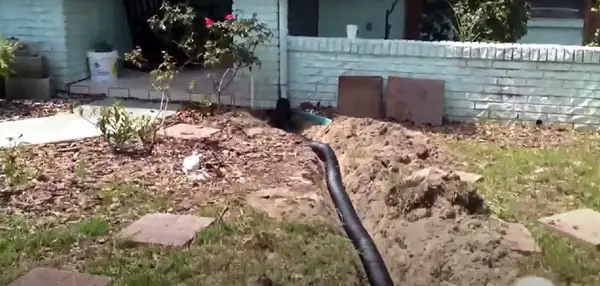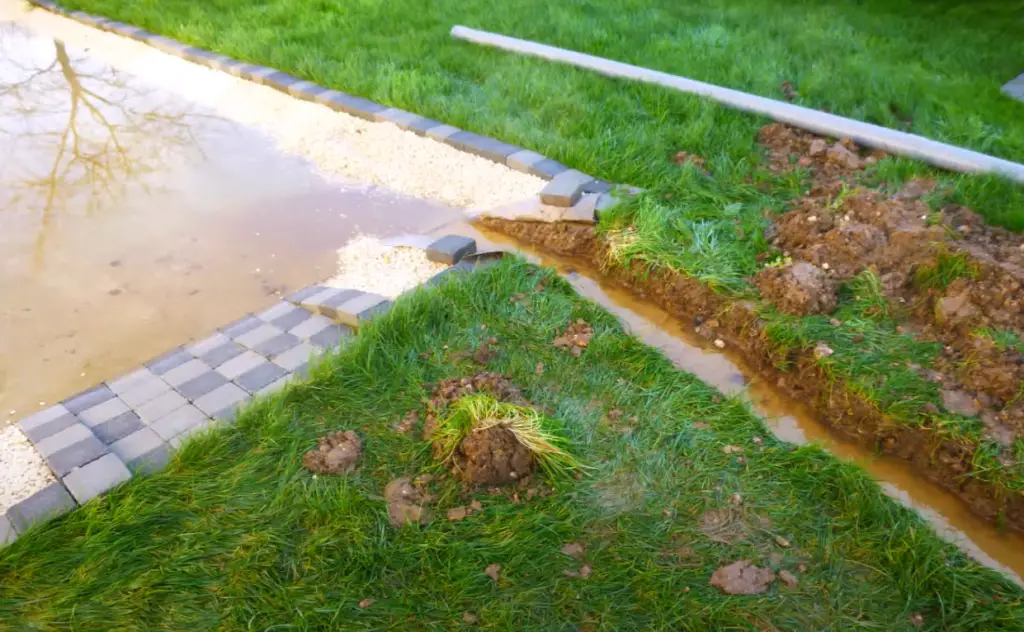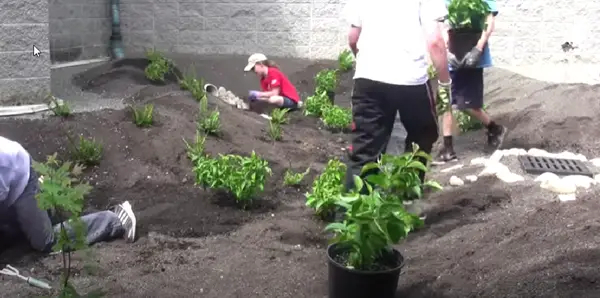Sump pump alternatives are a crucial aspect of homeownership. Whether nestled in a rainy region or prone to occasional floods, keeping water at bay is key to a dry, comfortable, and worry-free home.
When we think of water management, sump pumps often come to mind as the go-to solution. But did you know that there’s a whole world of alternatives out there, each with its unique set of benefits and features?
In this article, we’ll jump into the diverse universe of sump pump alternatives that extend far beyond the traditional sump pump.
Table of Contents
Understanding Water Management Needs
Water management is a critical facet of responsible homeownership. To truly appreciate the importance of effective water management, it’s essential to grasp the specific scenarios where it becomes an absolute necessity.
Common Scenarios Where Water Management is Essential
Water management is vital in various situations, and understanding these scenarios is the first step toward safeguarding your home:
- Rainy Regions: If you live in an area prone to heavy rainfall, your property may be at risk of water intrusion. The relentless downpours that characterize certain regions can quickly saturate the soil, leading to basement flooding and water damage.
- Rising Water Tables: Some areas experience high water tables, meaning the groundwater level is perilously close to the surface. In such regions, a rise in the water table due to heavy rainfall can cause water to seep into your basement or crawl space.
- Coastal Areas: Coastal dwellers face unique challenges. The threat of storm surges, high tides, and coastal erosion demands robust water management systems to protect homes from the relentless advance of seawater.
- Flash Flood Zones: Locations prone to flash floods are particularly vulnerable. The sudden, intense nature of these floods can overwhelm drainage systems, leading to rapid and severe property damage.
- Home Elevation: Homes built at a lower elevation than the surrounding terrain may face water runoff issues. Proper water management is essential to divert runoff and protect the home’s foundation.

The Risks Associated with Inadequate Water Management
Inadequate water management can have dire consequences for homeowners, ranging from inconvenient to floods being extremely devastating. It’s crucial to recognize these risks:
Property Damage: Water infiltration can absolutely destroy your property. It can damage foundations, flooring, walls, and personal belongings, leading to expensive repairs and replacement costs.
Health Hazards: Prolonged exposure to moisture can foster mold and mildew growth, which can cause health issues for residents. Mold spores can exacerbate allergies and respiratory conditions.
Structural Issues: Water infiltration can compromise the structural integrity of your home, leading to costly and potentially dangerous consequences.
Decreased Property Value: Persistent water issues can lower the value of your home and make it harder to sell. Prospective buyers are often deterred by the prospect of water damage.
Emphasizing the Need for Tailored Sump Pump Alternatives
Given the diversity of challenges homeowners face, the importance of tailored solutions cannot be overstated. Customized protection, a proactive approach, and peace of mind are offered by sump pump alternatives like water alarms, French drains, and eco-friendly choices, ensuring your home remains dry and secure.
No one-size-fits-all approach will suffice. What works for a coastal home may not work for a house in a rainy region. Tailoring solutions to homeowner’s needs is essential to protect your investment and ensure a dry, comfortable living environment.
Customized Protection: The unique circumstances of your home call for a customized water management solution that addresses your specific needs. That could be a basement sump pump, French drains, or dry wells, in addition to landscaping the yard.
Proactive Approach: Taking a proactive approach to water management not only mitigates risks but also saves you money in the long run by preventing costly water damage.
Peace of Mind: Tailored water management solutions provide peace of mind, allowing you to enjoy your home without worrying about potential water-related issues.
Understanding the scenarios that demand water management, recognizing the risks of inadequate management, and embracing tailored solutions are fundamental steps toward ensuring your home remains dry and secure.
Alternative Water Management Options
Submersible sump pumps have long been the standard for water management, but the world of sump pump alternatives offers a diverse range of solutions that can cater to various needs and preferences. Here, we’ll delve into these innovative options that can safeguard your home, ensuring you’re well-prepared for whatever water-related challenges come your way.
Battery Backup Systems:
When the lights go out, you don’t want your water management system to do the same. That’s where battery backup systems come to the rescue. These systems are the unsung heroes of water management.
Many water alarm systems are battery operated (like the one shown below) and keeeping fresh batteries available or installed is an easy insurance plan.
- Detects as little as 1/32 in. of water to offer an effective early warning system
- Solid-state circuitry is extremely sensitive and reliable
- Loud 110 dB alarm can be heard throughout the house
- Sensor has a 6 ft. wire so it can be extended into a sump pit, or mounted on a wall
- Accommodates the addition of more than 100 ft. of wire (additional 24-Gauge wire not included)
However, some water alarms and/or the Wi-Fi system they are connected to are AC powered and need a battery backup system. After all, if you rely on being notified while away from home but the Wi-Fi system isn’t able to send a message, what good is it?
One solution is to install AGM type deep cycle 12 volt batteries that power a DC to AC current inverter. The same system is used to operate battery backup sump pumps.
- How They Work: Battery backup systems act as a reliable safety net for your primary water management solution, whether it’s a sump pump or another device. They come equipped with a battery that activates during power outages, ensuring your home remains protected even when the electricity grid fails.
- Reliability During Power Outages: One of the standout features of battery backup systems is their steadfast reliability during power outages. When severe storms or electrical issues threaten your home, these systems seamlessly take over to keep the water at bay.
Water Alarms and Sensors:
Early detection can be a game-changer in water management. Water alarms and sensors are like the vigilant sentinels of your home, constantly monitoring water levels and ready to sound the alarm before trouble strikes:
- Early Detection Role: Water alarms and sensors are the watchful guardians of your space. They detect rising water levels and promptly sound an alert, allowing you to take immediate action to prevent potential damage.
- Ease of Installation and Use: These devices are designed with simplicity in mind. They’re easy to install and operate, making them accessible even for those without advanced technical skills. Just set them up, and they’ll take care of the rest.
- SMART WATER DAMAGE PREVENTION FOR YOUR HOME – The mydlink Whole Home Smart Wi-Fi Water Leak Sensor Starter Kit provides a quick and easy way to help protect your home and valuables from the damage caused by water leaks. This modular system allows you to monitor multiple locations throughout your home without the need of expensive plumbers or plumbing.
- BRIGHT LIGHTS, SOUNDS AND PUSH ALERTS – The built-in 100 dB siren and strobing LED light is perfect for alerting you to a leak when you’re home. And if you are not at home, the mydlink Wi-Fi Water Sensor will send push notifications to your iOS or Android device. Connect it to a Google speaker and the Google speaker will announce when a leak is detected.
- FLEXIBLE PLACEMENT – The master plug-in Smart Wi-Fi Water Leak Sensor (DCH-S162) includes a 1M extension cable plus 0.5M sensing cable that detects water along its full length. Perfect for monitoring under an appliance or in tight spaces.

Gravity Drains and French Drains:
Sometimes, simplicity is the most effective approach. Gravity drains and French drains rely on the fundamental principle of gravity to divert water away from your home:
- Diverting Water: These unassuming solutions move water away from your property through a system of drains, pipes, and gravity’s relentless pull. They’re particularly well-suited for situations where water naturally flows in predictable patterns.
- Suitability for Specific Situations: Gravity and French drains are excellent choices for scenarios where excessive moisture can be anticipated. If you live in an area with a predictable path of water runoff, such as sloping terrain or well-drained soil, these drains can channel water flow safely. French drains provide low-tech protection.
Eco-Friendly Options:
For those who are eco-conscious and looking to minimize their environmental footprint, there are alternative water management options that go beyond simple protection:
- Sustainable Solutions: These alternatives encompass a range of sustainable and eco-friendly practices that not only protect your home but also protect the environment. They may include rainwater harvesting systems, rain gardens, dry wells, permeable pavers, or green roofs.
- Energy-Efficient Choices: Beyond their eco-friendliness, some options are energy-efficient, helping you save on utility bills. Technologies like energy-efficient pumps and systems with practical, adjustable settings allow you to use only the necessary resources.
These alternative water management options offer a wealth of choices tailored to different needs and priorities. From dependable battery backups to vigilant water alarms and even environmentally conscious solutions, there’s a water management option for every homeowner, making it easier to protect your home and keep your home dry and secure.
Factors to Consider When Choosing Sump Pump Alternatives
When selecting sump pump alternatives, factors like budget, maintenance, longevity, space, and installation complexities play a crucial role. Cost-effective alternatives, understanding maintenance requirements, and considering space limitations ensure you choose sump pump alternatives that align with your needs.
Budget and Cost: When selecting the ideal water management alternative, your budget is a key player.
Understanding how budget constraints can influence your choice is paramount:
- Influence of Budget: Your financial resources play a significant role in determining which alternative is viable. Some solutions may require a higher upfront investment, while others may be more budget-friendly. The cost of French drains can be greatly reduced by making it a DIY project.
- Tips for Cost-Effective Solutions: Fear not if you’re on a tight budget. Cost-effective alternatives can provide adequate water management without breaking the bank. Keep an eye out for incentives, rebates, and DIY options that can save you money without compromising on quality.
Maintenance and Longevity: The level of maintenance your chosen alternative requires and its long-term reliability are critical factors that can significantly impact your decision:
- Maintenance Requirements: Different water management alternatives have varying maintenance demands. Some may require periodic inspections, cleaning, or component replacements. It’s essential to understand and plan for these ongoing tasks to keep your system running smoothly.
- Long-Term Reliability: Ensuring the long-term reliability of your chosen alternative is paramount. You don’t want to invest in a solution that will fail you in a few years. Consider the durability and lifespan of the system, as well as the availability of replacement parts and servicing options.
Space and Installation: The layout of your home and the available space can significantly impact your choice of water management alternative:
- Space Limitations: If your property has limited space in your basement or crawl space, choosing an alternative that fits comfortably within the available area is essential. Some alternatives may be more space-efficient or can be adapted to confined spaces. One example are water sensing alarms.
- Installation Complexities: Installing certain water management systems may be more complex than others. If you’re not a DIY enthusiast, you may need professional installation. Consider the installation requirements and whether you’re comfortable tackling the project yourself or need expert assistance.
Rain gardens, dry wells and French drains can be a DIY project if you can do the physical labor involved.
- COLLECT, DETAIN, AND INFILTRATE EXCESS WATER: For draining yard and landscape areas prone to flooding, the Flo-Well Dry Well is installed underground to collect, temporarily store, and slowly release excess water into the ground
- HOW TO INSTALL: Connect to 4″ Sewer and Drain (S&D) Pipe through top cover knockout; 12 side-panel knockout points connect 4″ S&D and Sch 40 Pipes; Can be buried or stacked up to 8 ft deep and supports pedestrian traffic, including lawn tractors
- GRAVEL-FREE ALTERNATIVE: Unlike a traditional dry well that requires filling a large hole with heavy stone and gravel, the Flo-Well Dry Well only needs a small amount of gravel at the base to prevent scouring and provides 250% more detention volume than comparable gravel-filled dry wells
- USE ONE OR MANY: Works as a stand alone product and can be used in multiples – units can be stacked up to 4 high or side-by-side 18″ apart; Ideal for residential and commercial locations such as yards, playgrounds, golf courses, wash-down areas, rain gardens and bioswales
- INCLUDES: 3 side panels and top cover, unassembled; open bottom allows water to seep into gravel and ground below; bottom panel sold separately to provide a base for a sump pump if desired
- Suitable Alternatives for Different Spaces: Depending on the configuration of your home, some alternatives may be better suited to your space limitations. For instance, compact options like water alarms and sensors can work well in tight indoor areas, while French drains are ideal for those with extensive outdoor space.
With these considerations, you can make a well-informed decision that aligns with your financial capabilities, maintenance preferences, and the unique spatial characteristics of your home. The goal is to select a water management alternative that offers reliable protection without overextending your budget or causing undue headaches in the long run.

Tailoring Sump Pump Alternatives to Your Needs
The versatility of sump pump alternatives lies in their ability to cater to various needs. Self-assessment, considering specific requirements, budget, available space, and maintenance preferences are essential in finding the right sump pump alternative for your home.
Here’s how to ensure the perfect match:
Assess Their Specific Requirements: The first step in finding the right water management alternative is self-assessment. Understand your needs, preferences, and circumstances. Start by asking yourself the following questions:
- What is the primary purpose? Are you looking to prevent basement flooding, protect your property during power outages, or achieve an eco-friendly water management system?
- What’s your budget? Determine how much you’re willing to invest in a water management solution, factoring in not just the initial cost but also ongoing maintenance expenses.
- How much space do you have? Consider the physical limitations of your property. Is there ample space for installation, or are you working with a tight basement or crawl space?
- Are you comfortable with maintenance tasks? Assess your willingness and ability to perform routine maintenance or whether you prefer a low-maintenance solution.
Conclusion: Proactive Water Management with Sump Pump Alternatives
In the world of water management, sump pump alternatives offer a diverse array of possibilities. Whether preventing basement flooding, protecting against power outages, or achieving an eco-friendly system, there’s a solution that’s just right for you. Armed with the knowledge from this article, you’re ready to take proactive steps with sump pump alternatives to ensure a secure and dry home.
If you need a sump pump in the basement for use with a French drain I highly recommend the Zoeller M53 submersible sump pump – read my review.

Author at Best Sump Pumps
The first time I helped to install a drain tile and basement sump pump system was 1978.
Since then I have worked for a city water utility where I worked with and maintained pumps.
My rental properties and personal homes all needed sump pumps.
As a modular home dealer/builder, those new homes needed sump pumps.
I put that experience to good use by providing reliable, useful, and practical advice on buying, using, and maintaining sump pumps.



